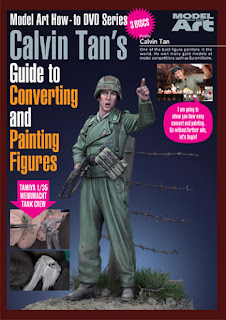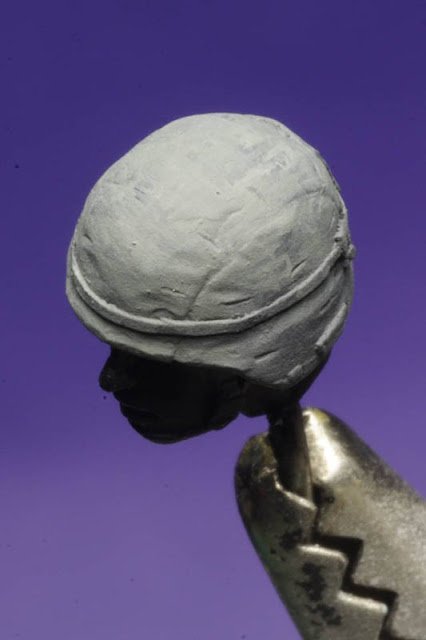Representing the ACU in 1/35
_
Thank you all for all the nice comments and keen interest on the painting of the digital camo pattern of the ACU. All of you might have guessed that I was pretty tied up trying to complete the two figures and their spare heads in the past couple of weeks or so to reply to some of your responses. Thus in appreciation for your enthusiastic support and patience, I thought I'll prepare a short pictorial description on my representation of the ACU digital camo.
My first immediate concern was to figure a way to represent this seemingly complex camouflage pattern in 1/35 scale and I found out that the most effective and manageable approach was not to copy the pattern but rather giving a convincing impression of the pattern instead.
What I meant by this is to focus on the general shape of the pattern and not on the little pixels that make up the pattern. And for this to happen one will need to take a step back and observe the pattern from a distance when all the tiny pixels appear as a series of abstract shapes. The digital pattern camouflage is rather arbitrary and one could make up the shapes along the way so long they appear to look "digital". A good idea would be to build up the pattern with Polymino shapes in mind.
Looking at the actual ACU digital camouflage, there are actually two very similar shades of grey that make up the pattern. Considering the effect of scale, I choose to ignore the lighter shade first and used the darker shade to define the general shapes of the grey. This is so that I could get a stronger contrast to define the general shapes. The lighter shade later be introduced along the areas of highlight on the uniform serving both functions of shading and representation.
Outlining and highlighting.
Lighter shade of grey is glazed over the darker shade to enhance the highlights.
PAINTING THE FACE
More base colour with reds for cheeks.
Preliminary highlights
More highlights and details
Just for the record the names of the troopers are are Bill Paine and Shep Horan :P
Calvin
































8 comments:
nice work!!!
big thanks for tutorial
many thanks Calvin for this WIP !!!!
stunning work
Their names are Bill Paine and Shep Horan, What a nice joke!!! :)
*_* Great, Calvin
Frankly, a figure(hobby fan)
is being painted with this tutorial
thesedays.
But, it's becoming an unknown or
an worrior from the universe.
Too difficult, Calvin.
Who let this camouflage out ? ^^;;
I think I should wait a decal from Sinsengumi.
This camouflage is more trouble
of a cartload of minkeys for me.
Hoo-dddddddddddddddddddddddddd
However, it's so brilliant. Calvin
jack
Hi, Wonsug.
Nice joke ?????
Have heard enough of your awful
nosensical joke.
ㅋㅋㅋㅋㅋ ^^;;
ha ha ha ha ha
ㅡ.ㅡ;; Oops.....
Is it your joke, Calvin ?
jack
Wow it came out really nice. Wish I was talented like you.
Excellent work! This is my go-to post for figuring out how to paint digital camouflage to scale. Now, the hard part, finding the time to work on my model kits...
Thanks for share!!
Post a Comment